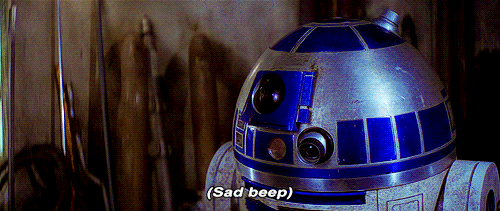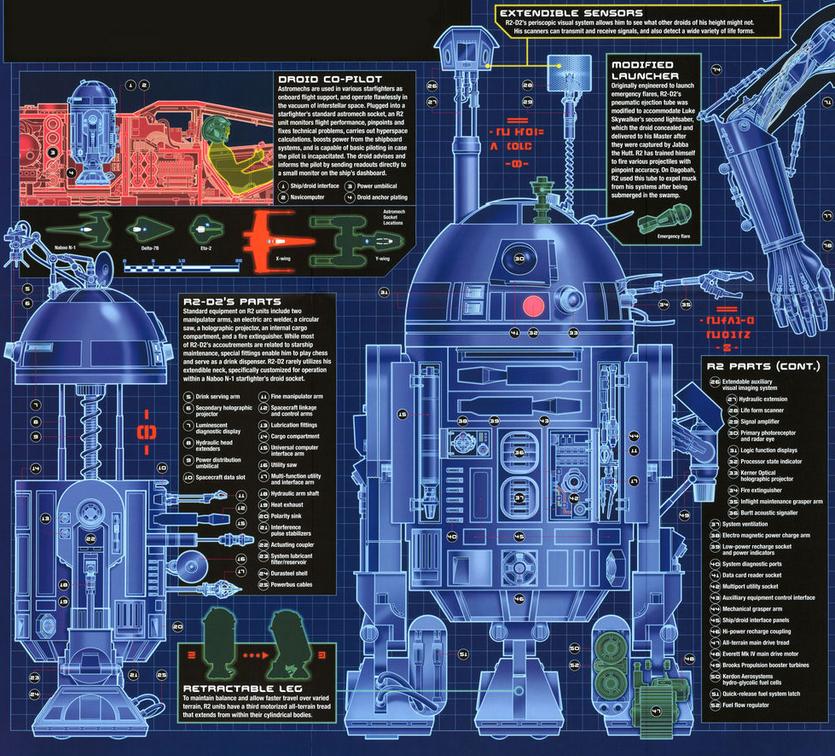RCL Systems Blog
Your Droid Phone is Inferior to the Greatest Droid of All, R2-D2
 In 1977 the first Star Wars movie premiered, entitled “A New Hope.” The science-fiction film became a hit and spawned a franchise that’s still going strong 38 years later, with the upcoming release of its much-anticipated seventh feature film, “The Force Awakens.” In fact, Star Wars is such a big deal that it has its own holiday, celebrated every May 4th (May the 4th be with you).
In 1977 the first Star Wars movie premiered, entitled “A New Hope.” The science-fiction film became a hit and spawned a franchise that’s still going strong 38 years later, with the upcoming release of its much-anticipated seventh feature film, “The Force Awakens.” In fact, Star Wars is such a big deal that it has its own holiday, celebrated every May 4th (May the 4th be with you).
As an IT company, we’ve always been fascinated by science fiction, due to its portrayal of new and exciting futuristic technology (and we know that technically Star Wars took place in the past). As we watch these movies, there’s a part of us that thinks, “Wow, maybe one day we’ll get to fly the galaxy in starships and shoot laser blasters.”
With Star Wars being around for more than two generations, we have a unique perspective when it comes to the technology of this science fiction franchise. Did you know that movies like Star Wars have inspired the development of technologies that we have today? In fact, the United States military has been weaponizing Star Wars-like laser systems since the 1980s, meaning that it’s only a matter of time before we finally get lightsabers.

One of the most prominent technologies in the Star Wars universe is droids. These are robots that follow humanoid characters around, essentially acting as personal assistants equipped with an arsenal of gadgets. Having a prominent role in all six previous Star Wars movies is the blue and white droid known as R2-D2; a fan-favorite character whose lovable antics have caused movie watchers for years to say, “Aww, I want an R2-D2 too!”
With technology developing by leaps and bounds since 1977, we feel it’s a worthy question to ask on this glorious Star Wars Day, “How close are we to having our own R2-D2 droid?” Devices like smartphones can do several different tasks that R2-D2 can do. This is likely the reason why Android mobile OS software is nicknamed “droid.”
To get to the bottom of this question, let’s take a look at the R2 unit, compliments of Wookieepedia:

R2-D2 was a diminutive droid, standing 0.96 meters tall. He rolled on three legs, one of which could retract into his body, and had a silver and blue domed head. His white, blue, and silver body housed many arms, sensors, and other apparatuses, many of which were not readily seen by the typical humanoid eye. This often made the droid seem like a box of tricks, unexpectedly pulling out some previously unseen but very much needed device at a critical moment.
Features of the R2-series astromech droid include (bolded are the tasks that we can do on our modern “droid” devices):
- Rocket booster
- Cable gun
- Oil injector
- Claw arm
- Fusion cutter
- Holoprojector / Recorder
- Internal comlink
- Periscope
- Electric pike
- Propeller
- Hidden lightsaber compartment with ejector
- Fire extinguisher / Smoke Screen
- Small Saw
- Air Cannon
- Crashmat
- Lariat
- Submarine Mode
- Collapsible Umbrella
- Flea Remover
- Distracter
- Headdress Detangler
- Droid Deactivator
- Computer Interface Arm
- Charge Arm (electric shock)
- Life-form Scanner
- Breakdance Mode
- Polarity sink
- Water pump/hose
- Inflatable mattress
- Media copy / storage disc drive
- Jukebox
- Small red "tongue" ribbon
- "Confetti-creation device"
- Lubricant Application Arm
- Motorized, all-terrain treads
- Power recharge coupler
As you can see, we’ve still got a long way to go before we’re able to have a single device that can do everything that R2-D2 can do, but, just the fact that we can now carry in our pockets a “droid” that can do SOME of these tasks is very telling about the direction of technology since Star Wars was first introduced “a long time ago.” Frankly, we wish our modern-day mobile devices had confetti-launchers.
What are some of your favorite Star Wars-inspired technologies? Let us know in the comments!
Images courtesy of the Walt Disney corporation.
When you subscribe to the blog, we will send you an e-mail when there are new updates on the site so you wouldn't miss them.


Comments